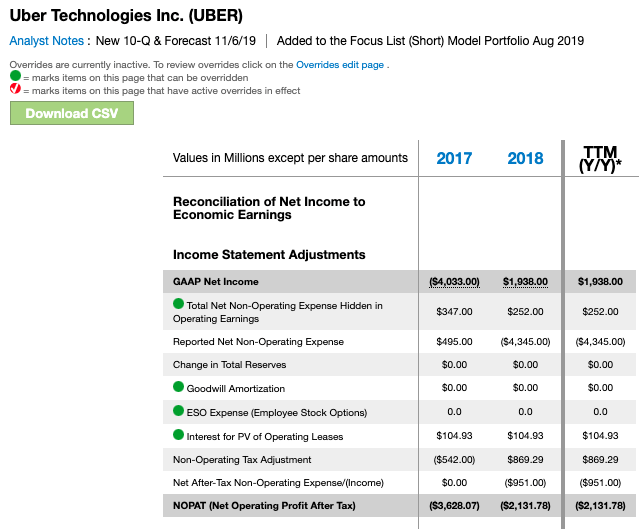Content

For Medicare, the amount is 1.45% withheld from your employees’ wages, as well as your matching amount. FICA stands for Federal Insurance Contributions Act, and the tax pays for Social Security and Medicare. Employees are responsible for half of the total tax (7.65%), and employers pick up the other half. The total amount of tax due for all workers is 15.3% of gross earnings for 2023, though most people will see only 7.65% of that deducted from their checks because their employer pays the rest. Both SECA and FICA tax rates have increased since they were introduced.

The law also requires the employer to pay an employer’s portion of Social Security and Medicare taxes. You might also see money related to your FICA tax contribution on a tax return if you paid into Social Security on income over the $147,000 taxable minimum. Those who earn more than $200,000 (or $250,000 for joint filers) are also required to pay an additional Medicare tax of 0.9%. Single filers who make over $200,000 and joint filers over $250,000 are also required to pay an additional Medicare tax of 0.9%, as per the Affordable Care Act of 2013. This may influence which products we review and write about (and where those products appear on the site), but it in no way affects our recommendations or advice, which are grounded in thousands of hours of research.
FICA tax exemptions
Unlike the other FICA taxes, the 0.9 percent Medicare surtax is imposed on the employee portion only. There is no employer match for the Medicare surtax (also called the Additional Medicare Tax). You withhold this 0.9 percent tax from employee wages, and you do not pay an employer’s portion. Also, unlike the other FICA taxes, you withhold the 0.9 percent Medicare surtax only to the extent that wages paid to an employee exceed $200,000 in a calendar year.
In 1935, the United States Congress passed the Federal Insurance Contributions Act, known as FICA. Its purpose was to collect contributions to fund the new Social Security program established by the administration of President Franklin D. Roosevelt in the same year. Be sure to stay up to date, as FICA rates can change from year to year. Get your maximum refund for your small business with FreeTaxUSA. All content on this website, including dictionary, thesaurus, literature, geography, and other reference data is for informational purposes only.
What are FICA and FUTA?
If you are not FICA exempt, you are required to pay FICA tax on the taxable minimum of $147,000 (2022). Exemptions include religious organizations, children under the age of 18, university students, and certain local and state government positions. The FICA tax is part of Social Security’s Old-Age, Survivors, and Disability Insurance (OASDI) program. Specifically, FICA stands for the Federal Insurance Contributions Act — an act created in 1935 as a way to create Social Security funds for American workers. In 1966, the Medicare tax was included under this umbrella, and today the FICA tax includes both Social Security and Medicare contributions. Employers have to withhold taxes — including FICA taxes — from employee paychecks because taxes are a pay-as-you-go arrangement in the United States.
- As you can see, the employer’s portion for the social security tax and the regular Medicare tax is the same amount that you’re required to withhold from your employees’ wages.
- The total bill is split between the employer and employee, with each party paying half.
- Social Security tax rates remained under 3% for employees and employers until the end of 1959.
- Also, unlike the other FICA taxes, you withhold the 0.9 percent Medicare surtax only to the extent that wages paid to an employee exceed $200,000 in a calendar year.
- You withhold the surtax from employee wages, but there is never a matching payment required by the employer.
- This is often called the “Additional Medicare Tax” or “Medicare Surtax.” In 2022, it’s also important to keep in mind that only the first $147,000 of earnings is subject to the Social Security part of the FICA tax.
- Although this is a case with a relatively high earner, you can easily see how quickly FICA taxes can add up.
Our partners cannot pay us to guarantee favorable reviews of their products or services. If you’re self-employed, you pay FICA taxes as both employer and employee, or 15.3%. Use our W-4 Calculator to help you determine how to boost your refund or your take home pay. You can fill out an updated form and submit it to your employer at any time.
“Mismatch” between employer’s withholding obligation and employee’s tax liability
To make life easier, consider using a payroll software that automatically calculates FICA deductions. There are several options available for small business owners, including free payroll software programs. In 2022, the total FICA tax rate was 7.65%, which includes 6.2% to Social Security and 1.45% toward Medicare. For 2023, these numbers remain the same — but the taxable minimum has risen from $147,000 to $160,200.
- You want to be sure you’re not paying more than you’re required to.
- Paying FICA taxes is mandatory for most employees and employers under the Federal Insurance Contributions Act.
- The money collected is used to fund the Social Security and Medicare programs.
- Our experts answer readers’ tax questions and write unbiased product reviews (here’s how we assess tax products).
- Self-employed workers will pay self-employment tax (SECA) based on the net income from their business, which is calculated using form Schedule SE.
Unlike the 6.2 percent Social Security tax and the 1.45 percent Medicare tax, the 0.9 percent surcharge is imposed only on the employee. You withhold the surtax from employee wages, but there is never a matching payment required by the employer. FICA, short for Federal Insurance Contributions Act, is a federal law that requires employers to withhold and remit a certain percent of an employee’s earnings to help fund Social Security and Medicare. The total bill is split between the employer and employee, with each party paying half.
Social Security tax rates remained under 3% for employees and employers until the end of 1959. Medicare tax rates rose from 0.35% in 1966 (when they were first implemented) to 1.35% in 1985. What if you don’t have a traditional employer to pick up half of the total FICA tax tab?
- Although the amount you contribute to FICA is determined by the government, you do have some control over other withholdings based on your W-4 Form answers.
- Certain employers were also eligible to claim a payroll tax credit for employees whom they continued to pay but who were not working due to the pandemic.
- Although the rate can be set annually, it has remained mostly stable since 1990.
- Let an expert do your taxes for you, start to finish with TurboTax Live Full Service.
- The Social Security Administration uses your historical Social Security earnings record to determine your benefits under the social security program.
- The wage earner’s employer would pay slightly less because they aren’t required to pay the additional Medicare tax of 0.9% on the $50,000 above the $200,000 threshold.
- The FICA tax, also commonly called payroll or withholding tax, is money collected from you and your employer to pay for services such as old age, survivors, and disability insurance (OASDI).
If you have multiple jobs, you can claim the Social Security overpayment on Form 1040. If you owe any taxes, the IRS will use part of your refund to pay them off. If you overpaid Social Security taxes and you only have one job, you’ll need to ask your employer for a refund. Excess Medicare tax repayments are nonrefundable since there’s no wage base limit.
Services performed by certain individuals hired to be relieved from unemployment
Fortunately, if you’re self-employed, you’ll get to deduct half of the tax (7.65%) when you file your tax return. The self-employment tax deduction is an above-the-line deduction that you can use to lower your income tax bill. So you can claim it regardless of whether you’re itemizing your deductions or taking the standard deduction.

Under the CARES Act, employers (not employees) were allowed to defer their share of Social Security taxes owed for the year ending Dec. 31, 2020. Specifically, https://www.bookstime.com/articles/aging-of-accounts-receivable 50% of the deferred amount was due by Dec. 31, 2021. An employee earning $250,000 and filing singly will pay $13,282.40 in FICA contributions in 2023.
Calculating the Additional Medicare Tax withholding amount
It’s the law that requires employers to withhold money from employees’ paychecks to fund Social Security and Medicare. The vast majority of people in the US who earn a wage or salary pay FICA taxes. The amount your employer sets aside for FICA is based on percentages set by the federal government. As for federal, state and local income taxes, the amount your employer withholds will usually depend upon the information you provided when filling fica meaning out your W-4 Form or a similar state or local form. From the employee’s perspective, the 0.9 percent Medicare surtax is imposed on wages, compensation, and self-employment earnings above a threshold amount that is based on the employee’s filing status. Once the threshold is reached, the tax applies to all wages that are currently subject to Medicare tax, to the Railroad Retirement Tax Act, or to the Self-Employment Contributions Act (SECA).




